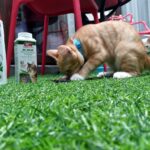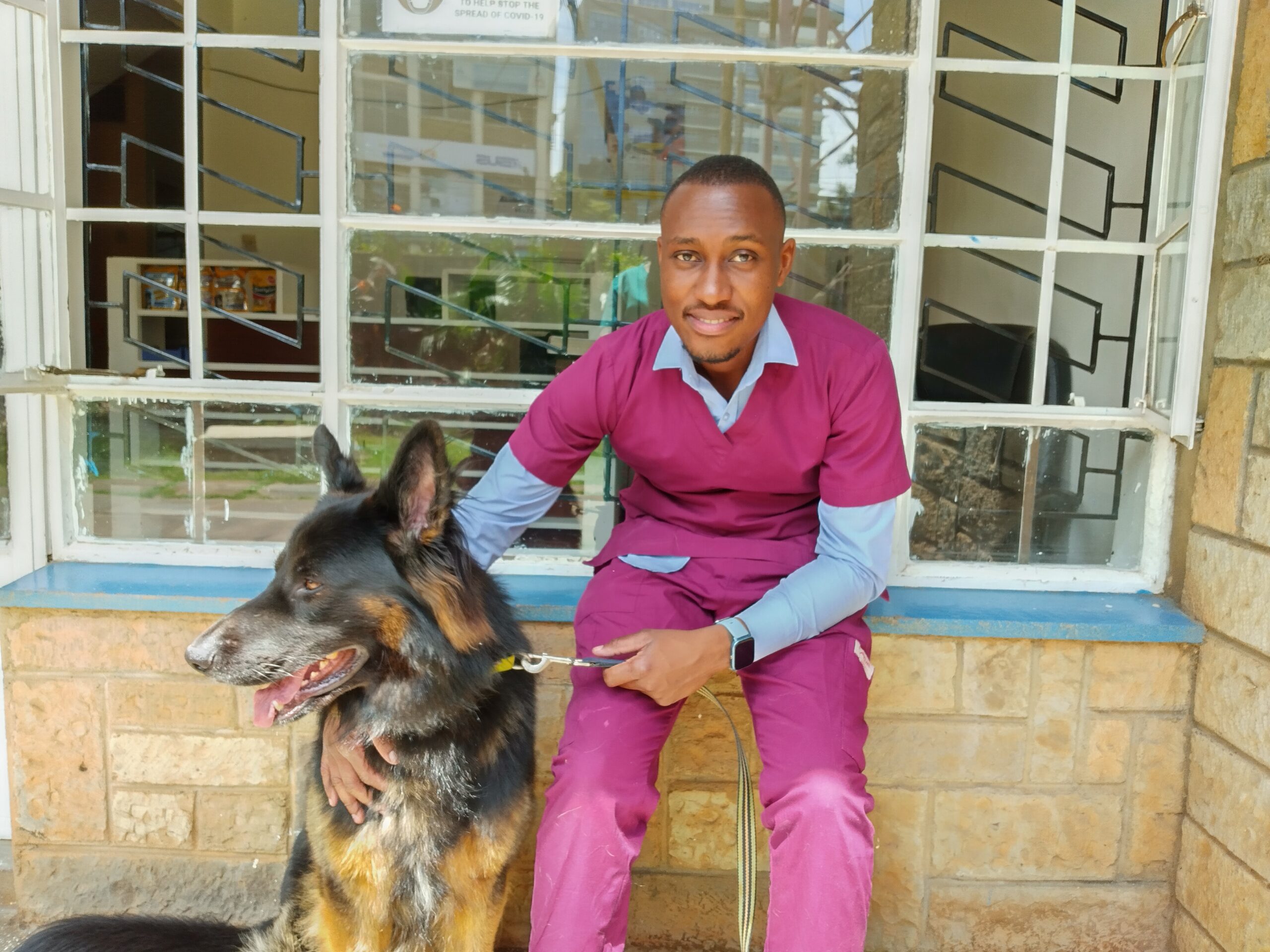Dog flea and tick prevention after being in an environment in Nairobi where flea populations flourish, such as Karura Forest where pet owners frequent with their pets, outside in shaded leafy debris piles and underneath decks, as well as inside homes and sometimes veterinary clinics in Nairobi where they can live in carpet fibers and underneath furniture.
Dogs get ticks after being exposed to an area where ticks live, such as in tall grass or wooded areas, where ticks wait to attach to an animal.
Dog flea and tick prevention is crucial for several reasons:
- Health of the Dog: Fleas and ticks are not just nuisances; they can pose serious health risks to dogs. Fleas can cause allergic reactions, and skin infections, and transmit diseases like tapeworms and Bartonella. Ticks can transmit diseases such as Lyme disease, Ehrlichiosis, and babesiosis in Nairobi and its environs, which can be debilitating or even fatal.
- Prevention of Infestations in the Home: Fleas can infest not only your dog but also your home. Once they infest your living space, they can be incredibly difficult to eradicate. Prevention helps to keep these pests out of your home environment.
- Preventing Transmission to Humans: Some diseases carried by fleas and ticks can also affect humans. By preventing infestations in dogs, you also reduce the risk of transmission to humans.
Dog flea and tick Prevention:
- Topical Treatments: These are usually applied directly to the skin on the back of the dog’s neck. They contain chemicals that kill fleas and ticks on contact and often provide month-long protection.
- Oral Medications: These are pills or chewable tablets that the dog ingests. They work systemically, meaning they circulate in the dog’s bloodstream, killing fleas and ticks when they bite the dog.
- Collars: Flea and tick collars contain chemicals that repel and kill fleas and ticks. They provide continuous protection and are convenient for dogs that are difficult to medicate.
- Shampoos and Sprays: These are used for immediate relief can kill fleas and ticks on contact and are applied when grooming. However, their efficacy is typically short-lived compared to other methods.
- Environmental Control: Regular vacuuming, washing bedding, and treating outdoor areas frequented by the dog can help reduce the flea and tick population in the environment.
Efficacy:
The efficacy of flea and tick prevention methods can vary based on factors such as the product used, the dog’s lifestyle, and environmental conditions. Generally, topical treatments, oral medications, and collars are considered highly effective when used as directed. It’s essential to follow the instructions provided by the manufacturer and to administer preventive measures consistently.
What to Do When a Dog Has Fleas and Ticks:
- Consult a Veterinarian: If your dog has fleas and ticks, it’s essential to seek advice from a veterinarian. They can recommend the most appropriate treatment based on your dog’s health status and the severity of the infestation.
- Treat the Dog: Your vet may prescribe medications or recommend over-the-counter products to eliminate fleas and ticks from your dog. Follow the instructions carefully and monitor your dog for any adverse reactions.
- Treat the Environment: Since fleas and ticks can infest your home, it’s crucial to treat the environment as well. Vacuum carpets, wash bedding, and use environmental control products recommended by your veterinarian.
- Prevent Reinfestation: Once you’ve eliminated fleas and ticks from your dog and home, focus on prevention to avoid future infestations. Consistently use preventive measures as recommended by your vet to keep your dog protected. Regular grooming and inspection for fleas and ticks can also help detect and prevent future infestations.







